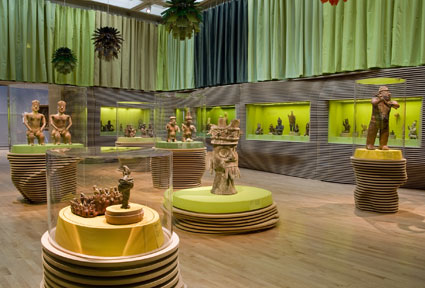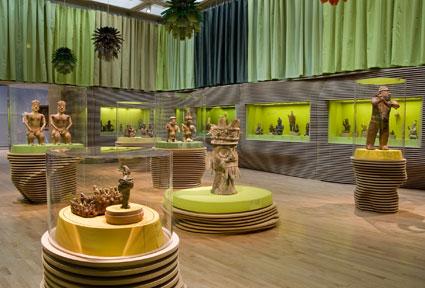Today’s guest blogger, ForYourArt’s Bettina Korek, is hardly a guest at all. She is a former staff member, and also, until recently, the co-chair of President’s Circle Avant-Garde, LACMA’s young patrons group. Bettina has left an indelible mark on Avant-Garde; the event she writes about below was her last as co-chair.
A few weeks ago LACMA Director Michael Govan met with members of President’s Circle Avant-Garde for a very special “surprise tour” of the museum (this is just one of the pretty amazing perks of the group). A couple of themes came up during the tour that I thought would be interesting to share—and something visitors can keep an eye out for when touring LACMA on their own.
Michael welcomed us in the Director’s Lounge, which was a treat in itself—the private space is in LACMA’s famed Bruce Goff-designed Japanese Pavilion and is filled with furniture by Noguchi and Maloof—and started off by speaking about his desire to have the museum bridge time, from ancient to modern. This idea informs so much of where LACMA is headed, and will ultimately manifest itself in the way we’ll enter the museum, starting with the present and traveling back in time—all the way back, in fact, through art history and ending with a view of the tar pits; a reminder of how fragile human culture is through the lens of geologic time. As Michael explained, “reverse history is a fiction of the present.”

Art of the Ancient Americas galleries; installation designed by Jorge Pardo
As we left the Director’s Lounge and headed up to our first stop at the pre-Columbian galleries, the relationship between, and relevance to, ancient art and the future was immediately clear in Jorge Pardo’s installation design for the Art of the Ancient Americas galleries.
Michael pointed out his favorites, like one of the smiling figures, and added another interesting layer—many objects in LACMA’s collection are meant to be used. Of course, the most obvious examples of integrating art into everyday life can be found in the museum’s decorative arts and design collection, but there’s also drinking vessels, plates, hunting spears, and even a child’s toy represented in the pre-Columbian galleries.
Our private tour ended at the amazing and newly acquired Matta, where the topic of communication was at the fore. Michael pointed out how (pre-Twitter) this astounding work reflected the global exchange of, and reaction to, information—a Chilean artist living in Paris addressing a crisis in Watts.
The purchase of the Matta was made possible partly with funds from Collectors Committee, another support group of the museum, and it seemed a fitting place to end this special evening.
Bettina Korek



